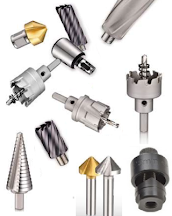Everything You Need to Know About Cutting Tools
Cutting tools are an essential piece of kit for pretty much any DIY project you're going to work on, whether that be your home or even just a small job. With so many different types of cutting tools, though, it can get confusing and difficult to choose which one you need. There are lots of different types of cutting tools available, though, so here's a quick guide on all the different types of cutting tools and what they can be used for.
One of the most ubiquitous tools found in any hardware-based shop, cutting tools represent a huge portion of the overall expense. Of course, it's not just the cost of the initial tool that matters, but also how much it costs to use and keep cutting tools sharp. Sharp machines make efficient work. This guide will look at what is commonly available and the characteristics which separate them from each other. It will also cover some factors you need to consider before deciding on what you purchase.
High-quality, effective Cutting Tools are incredibly important for a professional woodworker who can't afford to waste time and wood. If you want to minimize chips in your wood, minimize splintering, and make efficient use of your time while working with wood, you need to choose high-quality cutting tools.
A Beginner's Guide to Cutting Tools
Cutting tools are an integral part of woodworking. They come in a variety of shapes, sizes, and materials and are used for different applications.
Of course, there are many types of cutting tools that you can use in your workshop. Some are simple and basic, while others are more complicated and specialized.
To help you better understand the various cutting tools available, here is a guide to some of the most common ones:
1. Chisels — This tool is typically used for cutting mortises and tenons or as a chisel plane to flatten surfaces. It can also be used as a scraper or rasp to remove material from a surface. Chisels come in various shapes and sizes; however, the most common ones include paring chisels and bench chisels.
2. Hand saws — These include crosscut saws and rip saws, which cut on the push or pull stroke respectively. A dovetail saw is designed for cutting dovetails, which are joints between two pieces of wood. It's important to use the right type of blade for each job. For example, a crosscut blade won't work well on plywood because it will dull quickly; use a ripping blade instead. There are also dado blades that cut grooves in wood; these aren't suitable for general-purpose sawing.
3. Screwdrivers — Screwdrivers are small and simple, but they're also essential for working with wood projects. You'll find them useful for driving screws into pre-drilled holes and loosening screws that have been tightened too tightly.
4. Circular saw — This tool has a circular blade mounted on two wheels that spin at high speed while the blade cuts through wood or other materials. Circular saws are available in both corded and cordless models. They're used for ripping boards and crosscutting lumber into smaller pieces.
5. Nippers- Nippers are similar to scissors but they have wire — cutting blades instead of blades that cut paper. They're typically used by jewellers when working with precious metals because they're able to grip tightly without slipping off the metal as pliers might do.



.jpg)
Comments
Post a Comment